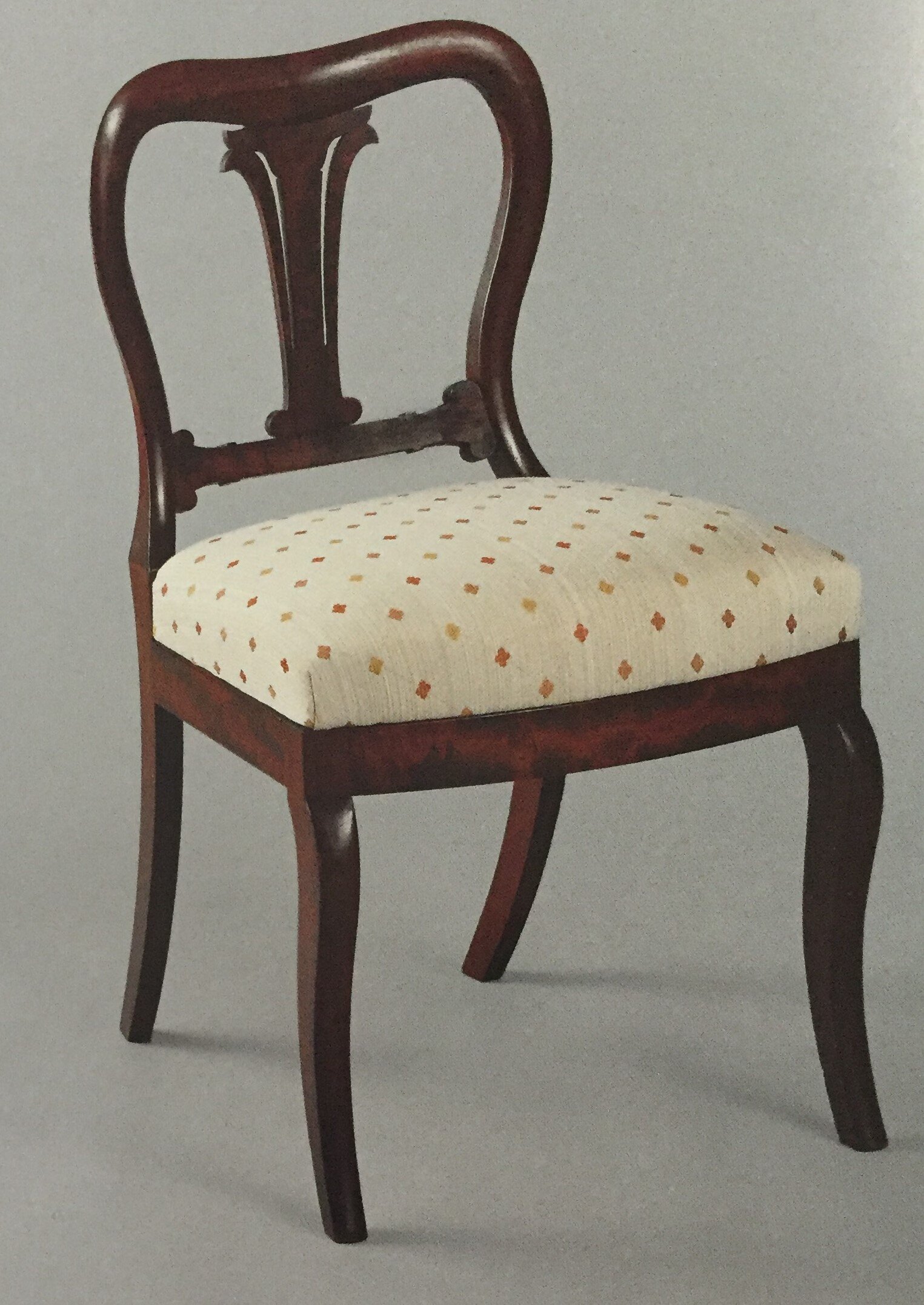A History of Duncan Phyfe: Iconic Furniture Designer of the Federal Period
Duncan Phyfe (1768-1854) (changed from Fife) immigrated to the US from Scotland in 1784. His family settled in Albany, NY, where he apprenticed and eventually set up his own shop as a cabinetmaker. In 1792, he set up shop in NYC on Broad and then Fulton Street. In 1793, he married and he and Rachel had seven children.His daughter Eliza married William Vail. Duncan not only furnished their home in New Market, NJ, but spent a lot of time there. New Market is a community within Piscataway, Middlesex County, and near South Plainfield. Eliza and William had 5 children, including one they named after her father.Duncan Phyfe was THE leading furniture maker in New York, working in the Sheraton, Regency and Directoire styles. He was, likely, the most copied Neo-classical furniture artist in American history. Phyfe was a perfectionist who was always seeking the perfect blend of grace and proportion. His neoclassicism draws inspiration from Roman antiquity while adjusting to the interests of the American public. Phyfe employed and apprenticed untold numbers of cabinetmakers from the era. It is said that at the peak of his popularity, Phyfe employed 100 workmen in his workshop, a shocking number for the time period. Even those who did not study under Phyfe directly would copy his designs. An important set of 12 Mahogany lotus-back chairs made by Duncan Phyfe, circa 1830, has descended from the family of Eliza Phyfe Vail to the current owner. This chair was exhibited at Metropolitan Museum of Art in a 2011-12 at the 1st major Phyfe exhibit in 90 years. It is documented in the exhibition catalog, plate 49. A set of this size with such pristine provenance has never ever been available. A set of 6 was part of the classical furnishings that were assembled by Page Talbott in the 1980's for the NJ Governor’s mansion called Drumthwacket. To Purchase Chairs, See Magnusson Estate Sale Listing.Ironically, it is Phyfe’s pervasive influence in Federal American furniture that obscures his current marketplace value. Phyfe rarely signed his work, making it hard to distinguish an original piece of Duncan Phyfe furniture from that of an imitator. With the “Duncan Phyfe: Master Cabinetmaker in New York” exhibition at the MET, there has been a resurgence in appreciation for this master designer.
An important set of 12 Mahogany lotus-back chairs made by Duncan Phyfe, circa 1830, has descended from the family of Eliza Phyfe Vail to the current owner. This chair was exhibited at Metropolitan Museum of Art in a 2011-12 at the 1st major Phyfe exhibit in 90 years. It is documented in the exhibition catalog, plate 49. A set of this size with such pristine provenance has never ever been available. A set of 6 was part of the classical furnishings that were assembled by Page Talbott in the 1980's for the NJ Governor’s mansion called Drumthwacket. To Purchase Chairs, See Magnusson Estate Sale Listing.Ironically, it is Phyfe’s pervasive influence in Federal American furniture that obscures his current marketplace value. Phyfe rarely signed his work, making it hard to distinguish an original piece of Duncan Phyfe furniture from that of an imitator. With the “Duncan Phyfe: Master Cabinetmaker in New York” exhibition at the MET, there has been a resurgence in appreciation for this master designer.
Co-Authors: Lynn Magnusson, ASA, AAA and Becky Lipnick, Communications Coordinator
